Under fire by horse activist groups, the Oregon State University School of Veterinary Medicine and the Bureau of Land Management (BLM) are looking to collaborate on the sterilization of wild mares in Hines, OR.
Carol Walker, director of documentation at the Wild Horse Freedom Federation (WHFF) finds OSU’s involvement in the possible experimentation not only unethical and inhumane, but in direct violation of the Wild Free-Roaming Horses and Burros Act.
The act states that if there’s an overpopulation of wild horses and burros in a given area, sterilization can be used as a means to control the wild horse and burro population. This can only be done with approval by the BLM Secretary of the Interior.
According to Walker, the BLM is violating the act on the grounds that the BLM would be utilizing medically invasive procedures on the animals.
“It in no way conforms to the minimally intrusive management on the range that the Wild Free-Roaming Horse and Burro Act of 1971 was passed to ensure,” Walker said in an email.
Walker also takes issue with the environment in which the possible research would take place in, arguing that the holding facility would not be truly sterile and that the horses would be scared of being contained and tested on.
Currently, the BLM is asking OSU to test three different methods of sterilization on the mares, according to Walker.
While the School of Veterinary Medicine would be conducting research on these sterilization methods upon approval, OSU Vice President of University Relations and Marketing Steve Clark is handling all calls and emails concerning the project.
The BLM first contacted OSU and the School of Veterinary Medicine and asked them to examine three potential sterilization methods as a third-party researcher and determine which one is the most safe and effective, according to Clark.
OSU has yet to decide if they will collaborate with the BLM on this project, Clark said. However, the research endeavors the BLM is proposing must first be accepted by a committee within the university.
The university is currently evaluating the proposed project for the safety of the animal subjects, Clark stated.
“Dependent upon whether this research is accepted by this independent university committee, then it would be up to the BLM to accept our requirements for safe and appropriate research methodologies,” Clark said.
According to Clark, OSU as a whole has no opinion on the issue of horse sterilization.
Clark emphasized that OSU takes this matter and community opinions, such as those from Walker very seriously.
“Everyone who sends us an email, we respond in writing. As we receive phone calls, we respond with phone calls,” Clark said.
Clark stated that the groups opposing the project are concerned with the humane treatment of the animals and that OSU agrees with those concerns.
In light of the recent tuition increase that was passed on March 31, Clark emphasized that no tuition dollars will go towards the research project and that funding would come directly from the BLM.
“The funding would provide for the work to be done by the researcher and the care of those animals that are involved in the research,” Clark said.
Clark is unsure of how much student involvement there would be in the project and if there will be any at all.
Clark also stated that OSU’s role in the project is solely research based and has no part in shaping or implementing public policy concerning wild horses and population control. OSU’s role in the project does not relate to any motives the BLM may have.
“The role of a research university, whether it’s about public health and human sciences or engineering or the liberal arts or veterinary medicine, is to both teach and conduct research in an unfettered way and provide information to students and the public in the case of research,” Clark said.
According to Clark, the research will be primarily conducted by Michael Huber, an associate professor of veterinary medicine at OSU and licensed large animal surgeon.
Huber’s work will be monitored by another third-party committee to ensure the safety of the animals and people involved in the project as well making sure that the project is conducted in an ethical way, Clark said.
Clark stated that Huber is concerned about the well-being of the horses and the impacts that overpopulation has on their health.
Huber could not be reached for comment.
Charlotte Roe, a founding member of the Wild Equine League of Colorado, is in opposition of OSU’s potential collaboration with the BLM on the sterilization research project and argues that there are alternatives to testing the three medical procedures, suggesting the possible use of the porcine zona pellucida (PZP) vaccine.
The PZP vaccine is an immunocontraceptive vaccine that is given to mares in as a means to control the population of wild horses in a given area and decrease foal production numbers over a given time period according to the National Center of Biotechnology Information.
According to Dawn Sherwood, an assistant professor in animal and rangeland sciences at OSU, while the PZP vaccine has seen success in other areas, there are few alternatives to mare sterilization in the case of Hines.
Sherwood believes that the sterilization project will affect herd behavior and dynamics in addition to the population of horses in the Hines area.
While wild horses travel in herds, they also have subgroups within the herds called harems. These harems which are comprised of one stallion, a lead mare, and between four and 20 other mares could change in size depending on the outcome of the sterilization research, Sherwood said.
According to Sherwood, the horses’ overpopulation is causing problems within Hines’ ecosystem. 1 see below
“I don’t have exact numbers as of this year but I do know that the numbers are out of control. They are running out of vegetation, watering holes are going dry – you have things along those lines where the land is just not sufficient enough to provide enough food and water for those horses,” Sherwood said. 2 see below
Since horses graze to the ground due to the structure of their teeth, they cause damage to grasses and create competition between other horses, deer and elk. Additionally, because of the structure and design of their hooves, an overpopulation of horses is causing damage to Hines’ lakes and riverbanks, according to Sherwood. 3 see below
When a large group of 20-40 horses are around a single watering hole, their hooves can trample down the edges and cause damage to the area’s riparian zones, according to Sherwood.
Sherwood mentioned that wild horses are a species that were originally introduced to the United States by humans, but as agriculture became more industrialized and the use of tractors became more common, the horses were often set free by their owners. 4 see below
“That’s really the basis of our wild horses, that they are feral horses and they’ve replicated, they’ve reproduced, and that’s where it needs to be taken care of is reducing their reproduction,” Sherwood said.
As a result, the horses reproduced on their own and began roaming countrysides nationwide, Sherwood said. 5 see below
According to Sherwood, there are positive outcomes that could come from sterilizing the mares including decreasing foal production numbers and the environmental problems that come with overpopulation. 6 see below
Sherwood takes issue with opponents of the sterilization research project because she believes that some groups are advocating to maintain the status quo for the wrong reasons. 7 see below
“It’s nostalgia, that’s why people are fighting to keep them,” Sherwood said, “They don’t see the starving horses, they don’t see them dying of dehydration.”
While Sherwood understands the sentimental attachment people have to wild horses, she believes that people don’t realize the pain horses go through as a result of a lack of population control.
“That’s what frustrates me as a horse person,” Sherwood said.
baro.news@oregonstate.edu
______
BLOG COMMENT:
1. there is no overpopulation of wild horses across the country. Sherwood needs more info.
2. cattle overgrazing is causing more damage to the range, plus produce methane gas and global warming climate change…all about the money from cattle ranchers and public land leasing by BLM. Oil, gas fracking, mining and cattle overgrazing are the most damaging acts on our public lands today.
3. horses graze to the ground due to the structure of their teeth but do not kill the grass, whereas cattle rip out the grass by the roots so they cause more damage to grasses and create competition between other horses, deer and elk. Horses one stomach passes the grass seeds out to refertilize the range. Cattle’s multiple stomachs digest the seed so do not benefit the land. Cattle ranchers put up fences so the wild horses cannot get to the watering holes. The 1971 Wild Horse and Burro Protection Act is supposed to protect them from this bad management.
4. equines first originated on the American continents and travelled north on route to Europe.
5. wild horses don’t roam the country nationwide today. There are estimates of only 20,000 left in the wild.
100 years ago there were over a million wild horses.
6. there are no positive outcomes from sterilizing the wild mares. They will abort there foals up at all stages of their pregnancy. There is no need for the barbaric sterilization. BLM already gelds the stallions they round up.
There is no need for the sterilization experiments because PZP eventually has sterilized the mares it has been used on after several years. These mares no longer get pregnant. They need to research why this is turning out to be non reversible. The wild horses need to have 150 or more healthy breeding stock to be a viable herd for the future of the wild horses and not deformed, imbreeding numbers like most herds are at risk of today.
7. Sherwood wants this program for the wrong reasons….all about money and politics, not for protection of America’s wild horses. They are the American public’s, yours and mine, wild horses and not the Oregon State U or BLM’s wild horses. THEY WILL NO LONGER BE WILD HORSES!
Please write to the president of OSU, Sherwood, Dr. Huber, President Obama, Congress and Senators to stop this barbaric inhumane experiment on 200 wild mares.
Protect the wild horses and burros for future generations to see in the wild and not just in the movies.
It is a right as a citizen to protect our wild horses. They are not owned by the BLM or OSU.
Many of these wild mares will die from infection from lack of sterile environment in a dusty, filthy corral on the range and lack of veterinarian care because they will be set free after the operation. There will be no pain management and many will continue to bleed.The stallions might not accept them back to the family unit. They will suffer, abort their foals at all stages and die on the range from lack of care that is give to domestic mares.

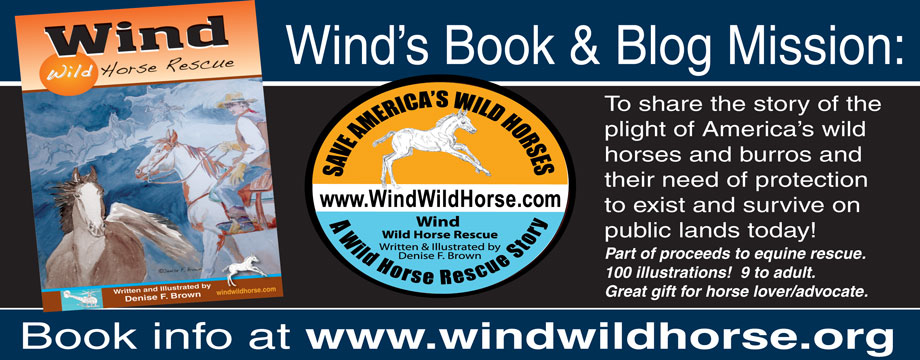
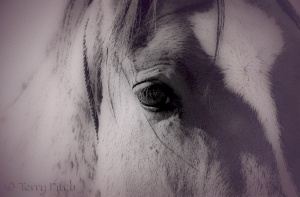
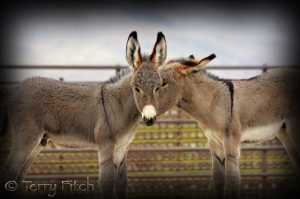
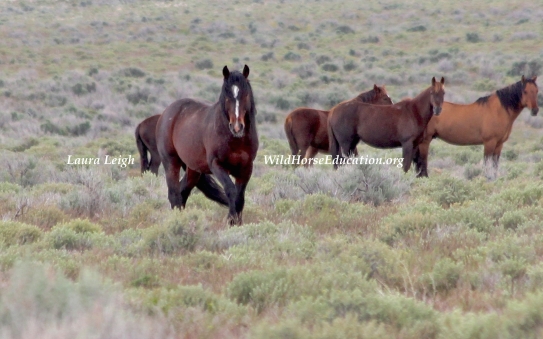
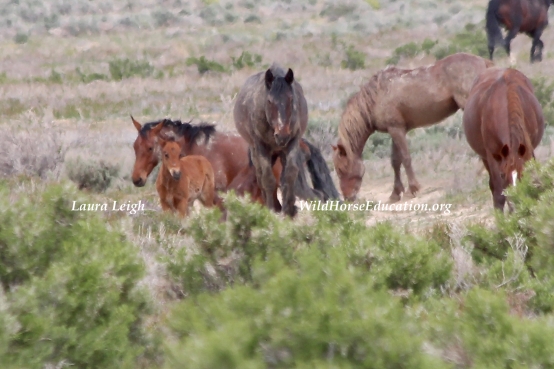
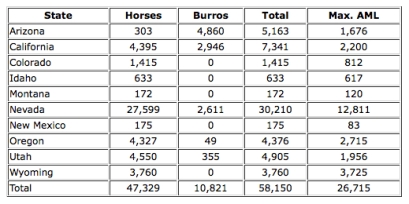
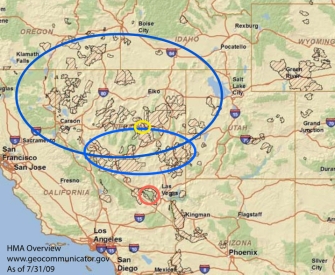
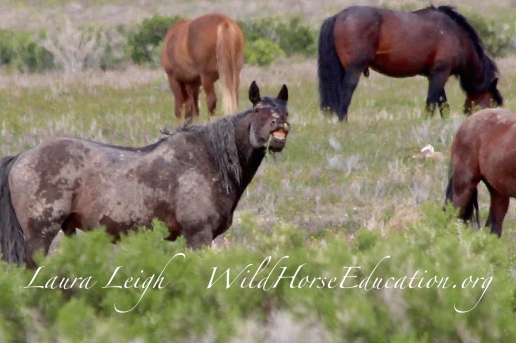
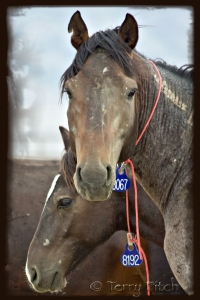





Stop the BLM’s Illegal Plans for the Checkerboard Roundup II – Comment by Friday April 22, 2016
Stop the BLM’s Illegal Plans for the Checkerboard Roundup II – Comment by Friday April 22, 2016
by Carol Walker, Director of Field Documentation, WHFF – as published on WildHoofBeats.com
Checkerboard Roundup 2014
Less than 2 years ago, the Bureau of Land Management illegally rounded up and removed 1273 wild horses from 2.4 million acres of public and private lands in Wyoming. 71% of this land is public land. At least 100 federally protected wild horses were killed during the roundup and in the months following it as they were warehoused at BLM facilities. The BLM is proposing to do this again this fall, and are using the same precedent that they did last time. They are using their right to remove wild horses from private land to justify and enable them to remove wild horses from public lands as well. This is illegal and must not be allowed to stand.
This plan to remove wild horses from the Checkerboard lands in the Herd Management Areas of Adobe Town, Salt Wells Creek and Greek Divide Basin is driven by the greed of the ranchers in the Rock Springs Grazing Association who seek to treat the public land as if it were their private land. Permit grazing is a privilege, not a right. Land swaps should be forced to occur in this area to consolidate private holdings and public ones separately in order to enable grazing of wild horses on public lands.
In this action the BLM is also violating the Federal Land Policy and Management Act (FLPMA) by lowering the numbers of wild horses allowed to live in these three Herd Management Areas (Appropriate Managegent Levels) without using a land use planning process to amend the governing Resource Management Plans (RMPs).
The BLM is using flyover data from their counts of wild horses in April 2015 to justify this removal:
http://www.blm.gov/style/medialib/blm/wy/field-offices/rock_springs/hma.Par.7748.File.dat/2015-RS-CensusReport.pdf
Here is what the BLM told us in October, 2014 – the remaining numbers of wild horses in Adobe Town, Salt Wells Creek and Great Divide Basin after the Checkerboard Roundup:
Adobe Town: 519
Salt Wells Creek: 29
Great Divide Basin: 91
All of these figures are below Appropriate Management Level, or AML for each of these Herd Management Areas.
The new figures from the 2015 April flyover are:
Adobe Town: 858
Salt Wells Creek: 616
Great Divide Basin: 579
And what exactly is the explanation behind this massive discrepancy? Even with all the mares and stallions in each Herd Management Area giving birth to twins, there is no possible way that there was such a huge jump in population sufficient to trigger this roundup. Conveniently there are no photographs during the flyover “The survey lead indicated his reluctance to use photography,as it requires additional circling around groups that could cause air sickness.”
Here is how you can comment – please do this by April 22 4:30 pm Mountain Time:
Written comments should be received by April 22, 2016, and should be emailed only to blm_wy_checkerboard_hmas@blm.gov
(Please include “Checkerboard Scoping Statement Comments” in the subject line),
or mailed to BLM Rock Springs Field Office, Checkerboard Scoping Comments, 280 Highway 191 North, Rock Springs, WY 82901.
Here is the Scoping Document:
http://www.blm.gov/wy/st/en/info/news_room/2016/march/24rsfo-checkerboard.html
Please DO NOT sign an online form letter. All of these will be counted by the BLM as 1 comment. If you actually want your comments to be read, counted and make a difference you must write your own letter and send it yourself.
Some points to cover: It is illegal to use section 4 of the Wild-Free Roaming Horse and Burro Act which covers removal of wild horses from private lands to remove wild horses from public lands.
It is a violation of the Federal Land Policy and Management Act to remove wild horses from three Herd Management Areas to below AML for those areas.
There is a need for a census done by an independent, outside agency, not paid for by the Rock Springs Grazing Association, that includes photographs of the horses that are counted.
There needs to be a plan for land swaps to be made to consolidate private lands separate from public lands in the Checkerboard.
Any horses removed from the Checkerboard Area of their Herd Management Areas need to be returned to the public, non-checkerboard areas of their Herd Management Areas, not permanently removed and sent to BLM holding facilities.
Regarding conflicts between livestock grazing and wild horse use of lands in Wild Horse Management Areas:
(a) If necessary to provide habitat for wild horses or burros, to implement herd management actions, or to protect wild horses or burros, to implement herd management actions, or to protect wild horses or burros from disease, harassment or injury, the authorized officer may close appropriate areas of the public lands to grazing use by all or a particular kind of livestock.
(b) All public lands inhabited by wild horses or burros shall be closed to grazing under permit or lease by domestic horses and burros.
(c) Closure may be temporary or permanent. After appropriate public consultation, a Notice of Closure shall be issued to affected and interested parties.
If the Rock Springs Grazing Association cannot come to an agreement on how many wild horses can live on the unfenced areas of the Checkerboard, then all of the public land within the Checkerboard and outside it in these three Herd Management Areas should be closed to livestock grazing.
The American public wants these wild horses to remain in their Herd Management Areas on public land, and to live out their lives wild and free, not suffering death and injury in roundups and stockpiled in holding facilities.